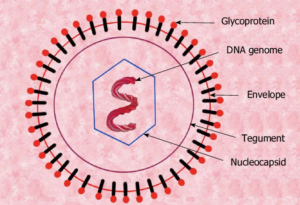Scarlet fever is a bacterial infection caused by group A streptococcus bacteria. It typically presents with symptoms such as a sore throat, fever, and a characteristic rash on the skin. The rash often appears first on the face and then spreads to the rest of the body. Other symptoms may include swollen lymph nodes, nausea, and a white coating on the tongue. The infection is most common in children and is treated with antibiotics.
Scarlet fever symptoms
The symptoms of scarlet fever include:
- Sore throat: usually the first symptom, it may be severe and accompanied by swollen tonsils and lymph nodes.
- Fever: usually high and accompanied by chills.
- Rash: the most distinctive symptom, it usually starts as small red bumps on the face and then spreads to the rest of the body. The rash is rough to the touch, resembling sandpaper. The rash can also appear on the chest, stomach, and groin areas.
- Strawberry tongue: The tongue may have a white or yellow coating, and the papillae (small bumps) on the tongue may appear red and swollen, giving the appearance of a strawberry.
- Other symptoms may include Nausea, stomach pain, headache, swollen and red tonsils, and swollen lymph nodes in the neck.
It is important to note that not all people with scarlet fever will have the same symptoms and the severity of symptoms may vary.

Scarlet fever rash
The rash associated with scarlet fever is one of the most distinctive symptoms of the condition. It typically appears 1-2 days after the onset of other symptoms such as sore throat and fever. The rash usually starts on the face, particularly around the ears and on the cheeks, and then spreads to the rest of the body, including the chest, stomach, and groin. The rash is usually:
- Bright red in color
- Raised or bumpy to the touch
- Rough and sandpaper-like texture
- May feel warm when touched
- May have areas of fine bumps or blisters
The rash may become more intense in color over the first few days and then begin to fade. It typically lasts for around 5-7 days, although it can persist for up to 2 weeks. The rash may be more severe in some areas of the body than others, and it may not be present on some parts of the body at all.
It’s important to note that the rash of scarlet fever is not contagious and it is safe to be around people with the rash.
Who gets it?
Scarlet fever is caused by a bacterial infection with group A streptococcus (GAS). The incidence of scarlet fever has varied over time, with periods of increased incidence followed by periods of decreased incidence.
Scarlet fever is more common in children than in adults, with the highest incidence occurring in children between the ages of 5-15 years old. However, it can occur in people of any age.
Scarlet fever is more prevalent in certain regions, with higher incidence in some countries and lower in others. In recent years, there has been an increase in the incidence of scarlet fever in some countries, particularly in East Asia. The reasons for this increase are not fully understood, but it may be due to changes in the virulence of the bacteria or changes in the population’s immunity to the bacteria.
Scarlet fever is spread through close contact with an infected person, or by touching a surface or object that has the bacteria on it and then touching the mouth, nose, or eyes. Proper hygiene practices such as handwashing, avoiding sharing personal items, and cleaning surfaces can help to prevent the spread of the infection.
It’s also important to note that although scarlet fever is not as common as it once was, it is still a serious infection that requires prompt medical attention and treatment.
How to diagnose it?
Diagnosis of scarlet fever is typically made based on the patient’s symptoms, medical history, and physical examination. The following tests may be used to confirm the diagnosis:
- Rapid strep test: This is a quick test that can be done in the doctor’s office to check for the presence of group A streptococcus bacteria in the throat.
- Throat culture: This test involves taking a sample of the patient’s throat secretions and growing the bacteria in a lab to confirm the presence of group A streptococcus.
- Blood test: This test can be done to detect any antibodies that the body has made against the group A streptococcus bacteria.
It’s important to note that a positive test result for streptococcus alone does not confirm scarlet fever, a clinical diagnosis is also necessary.
In addition, it’s also important to note that some of these tests may have false negative results, so if the clinical diagnosis is strong, the physician may choose to treat the patient with antibiotics without waiting for test results.
How to treat scarlet fever?
Scarlet fever is typically treated with antibiotics, which can help to shorten the duration of the illness and reduce the risk of complications. Commonly used antibiotics include penicillin, amoxicillin, and erythromycin.
The treatment usually lasts for 10 days and it’s important to take all the medication as prescribed, even if the symptoms disappear before the medication is finished.
It’s also important to practice good hygiene, such as washing hands frequently, to prevent the spread of the infection to others. Over-the-counter pain relievers like ibuprofen and acetaminophen can help to relieve symptoms such as fever, sore throat, and headache.
If left untreated, scarlet fever can cause complications such as rheumatic fever, which can lead to heart damage, or acute glomerulonephritis, which is an inflammation of the kidneys. That’s why it’s very important to seek medical attention as soon as possible if you suspect you or your child has scarlet fever.
Is the prognosis good?
The prognosis for scarlet fever is generally good with prompt treatment. Most people recover fully within 2-3 weeks with no lasting complications.
Antibiotics are effective in treating the infection and can shorten the duration of symptoms and prevent complications. The symptoms usually start to improve within 24-48 hours of starting antibiotics, and the fever and sore throat typically resolve within 2-3 days. The rash usually fades within 1-2 weeks.
Complications from scarlet fever are relatively rare, but can occur if the infection is not treated promptly or if the patient has other underlying medical conditions. Possible complications include:
- Rheumatic fever: This is an inflammatory disease that can affect the heart, joints, skin, and brain. It can occur after a strep infection, such as scarlet fever, and can lead to serious heart damage if not treated promptly.
- Acute glomerulonephritis: This is an inflammation of the kidneys that can occur as a complication of scarlet fever. It can lead to kidney failure if not treated promptly.
- Ear infections and sinusitis
- Pneumonia: If a patient is not treated promptly they may develop pneumonia.
It’s important to seek medical attention as soon as possible if you suspect you or your child has scarlet fever, in order to prevent complications and ensure the best possible outcome.



